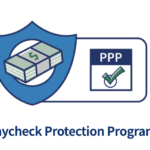Can I Deduct Rental Losses?

Over the past five years, the rental vacancy rates in the United States have seen a consistent drop caused by the growing market and an increasing number of families choosing to rent instead of own their home. In 2019, for example, Statista reports that none of the U.S. regions had more than roughly 8.2% of vacant rental properties, with the West region reporting as low as 4.4%. While this indicates a shifting mindset when it comes to owning one’s own house or apartment, it also shows that there is a rising number of landlords and homeowners who are choosing to engage in the real estate business and rely on passive income.
As with every category of income, the United States tax system treats rental income in a very specific fashion. Outside of the common issues related to the deductibility of some items, property owners have to worry about quite a few complex issues surrounding rental losses. More specifically, they have to keep in mind the rental loss passive activities rule, the rental loss phase-out as well as carryover that varies from year to year. To understand how the Internal Revenue Services analyzes tax returns that showcase rental losses, we must first dive into the “active participation.”
Active Participation Explained
Owning and renting a property does not immediately make one an active participant in the business. For instance, individuals who hire management companies to handle their property leasing process and have very minimum input will not be eligible to call themselves active participants as the vast majority of important decisions do not involve them. Instead, as per Sec. 469(i)(6)(A) of the Internal Revenue Code, active participants are property owners who own at least 10% of the property itself and have an active role in managing, leasing and maintaining the property. It is important to note, however, that active participation is not as demanding as “material” participation which demands that the owner has a continuous role in the business. Nonetheless, since active participation is all that is necessary to qualify for rental losses, we will focus on it here.
Passive Activities Limitations Explained
Once you determine that you are indeed an active participant in the business of renting your property, you will be eligible for a $25,000 deduction against non-passive income. This is a fairly uncommon deduction where the IRS permits taxpayers to deduct losses from one category against income from another category. For instance, when you work as an employee, everything you earn will be classified as “non-passive income.” If you invest in the stock market, however, everything you earn will be classified as “passive income” because the mere passage of time facilitated your gains. Well, if you find yourself having rental losses, the IRS will let you deduct up to $25,000 from other active income that you may have. So, if you earned $50,000 working full-time and lost $10,000 on a rental property that you owned more than 10% of and actively participated in during the year, you will get taxed on the cumulative amount of $40,000. The fact that these two types of income and loss are not coming from the same categories does not matter.

Phase-Out Limits for Rental Losses
While the rental loss passive activities rule allows some taxpayers to deduct up to $25,000 from non-passive income, you should be aware of the phase-out limits that exist for 2019. Taxpayers that have income above $150,000 will not be able to deduct any portion of the $25,000 as that is when the entire deduction is phased out. The actual guidelines demand property owners reduce their deduction by 50% of the amount by which their Adjusted Gross Income (AGI) exceeds $100,000.
So, if your AGI for the year is $120,000, you will have to reduce your rental loss by 50% of the $20,000 since that is the amount that you exceeded $100,000 by. That means that your deduction will drop down to a maximum of $15,000. Once you hit AGI of $150,000 or above, the entire $25,000 deduction will be phased out and you will not be eligible to take any of it.
This is where strategic tax planning can play an important role in you and your business. For instance, if you know that your income in one year is going to be a lot higher than $100,000, you may want to postpone making major investments in your rental properties that may cause you to have rental losses. Instead, if you anticipate earning less next year, it would be ideal to schedule all those investments during that time so that you do not have to worry about your rental loss getting phased out. Hence why hiring an accountant to help handle tax planning for your personal and business taxes is one of the easiest ways to save money and minimize IRS liability.
Rental Loss Carryover in 2019
Since quite a few active property owners have losses that exceed the $25,000 loss deduction and not enough passive income to utilize it all, the IRS allows for a carryover. Before analyzing that portion of the tax code, however, it is important to explain how you can deduct some of your rental losses that exceed the $25,000 limit.
While the first $25,000 of your loss can be deducted against active income, you will also be able to deduct whatever amount of loss you have against other passive income. This is where you will not have to combine multiple categories. For instance, if you earned $40,000 on stock investments during the year, you will be able to deduct up to $40,000 of rental losses since these are both passive activities that can be combined and totaled. Unlike the $25,000 limit for active participation, deducting from passive income streams is not limited.
At some point, however, you may find yourself facing a greater rental loss than any amount of active or passive income. For instance, if you invested in a property that turned out to be damaged and you had to spend $150,000 to rebuild it, you will need another $150,000 in passive income to be able to offset that entire amount and utilize the entire loss. If you don’t, however, the IRS will let you carry over the unused amount and save it for the future. So, if you only have $70,000 in passive income for the year, you will only be allowed to deduct $70,000 of your loss. The remaining $80,000 that you did not use will be carried over to the future when you can deduct it against upcoming passive income. Fortunately, there is no limit to how many years you can carry over your rental losses, which means that you will eventually most likely be able to use them in their entirety.

Planning Early
As mentioned, knowing the rules related to passive activities and rental income is not enough to be able to minimize your tax liability. Instead, you must also conduct a fair amount of planning that will help you recognize the best timing for your future investments or expenditures. Doing so can help you side-step some of the passive losses limitations and phaseouts.




Comments